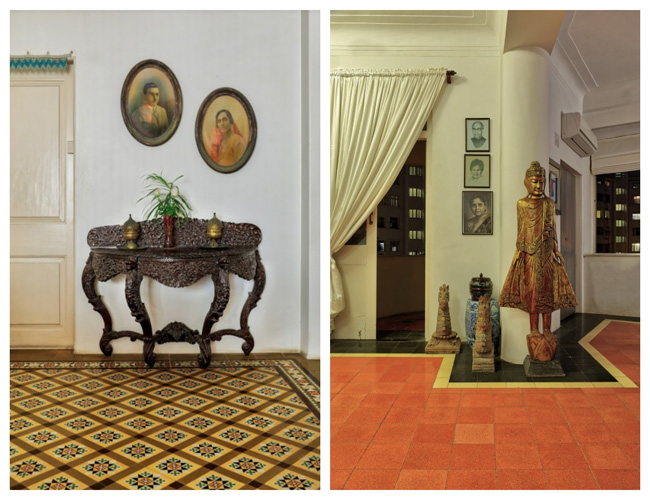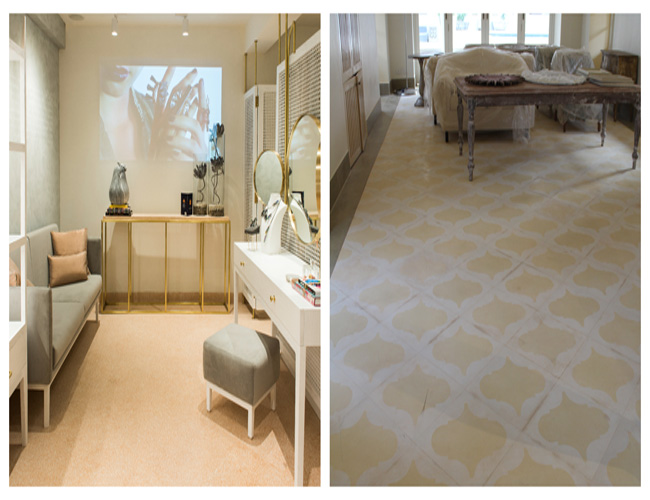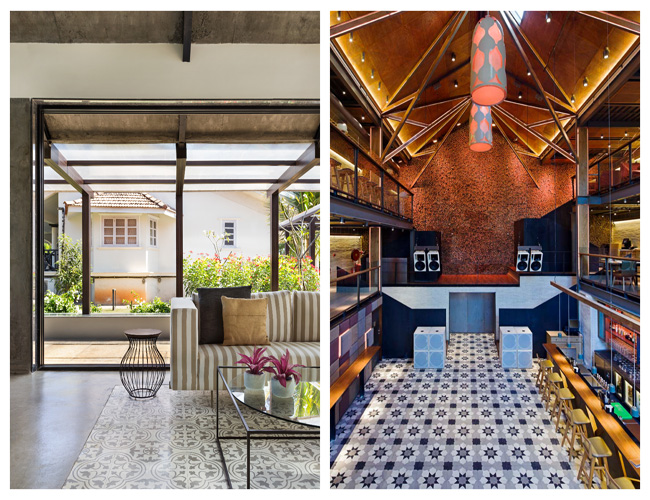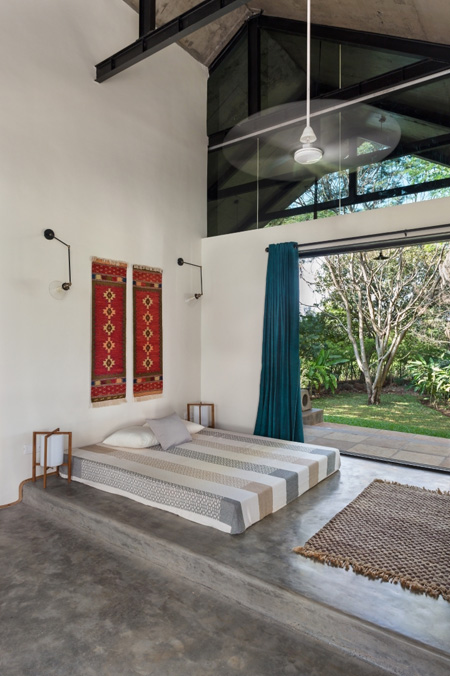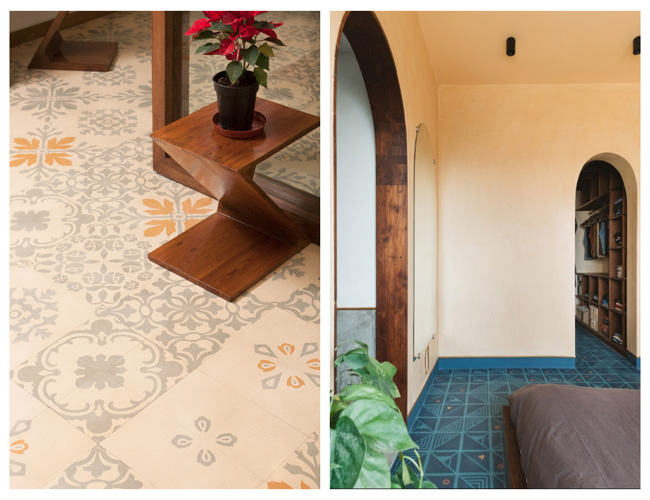100 Years
100 Stories


A coy bride in a Red lehenga, a black dot on a bonny baby to ward off the evil eye, the rich blue of Rajasthani pottery or the deep orange of marigold decorations - colour has been an inseparable part of Indian consciousness.
Traditionally, the colours we’ve used in India, have been a natural response to our environment, where pigments were derived from plants, stones and minerals. Red was extracted from the manjistha plant, pale yellows from the raatrani or the shiuli flower, ochre from turmeric, blue from indigo, green from the easy combination of turmeric and indigo, blacks from various tree barks mixed with iron sulphate, and white from lime. The abundance of these elements in the natural environment manifested in paintings, murals, textiles and rituals.
When it came to floors then, it was an implicit understanding that Indians would love to see their favourite colours beneath their feet. Pherozsha and Rustom Sidhwa displayed prescience in this and adapted the Minton style carpet tiles in India’s much loved colours. Thus was born the Jaisalmer Yellow inspired from that majestic fort in the blazing Rajasthan desert, Terracotta Red from the soft red mud used to make pots and roofing tiles, Leaf Green from the abundant vegetation that is found in most of India and Cutch Black for the garments of the women in the salty Rann. One look through Bharat’s early product catalogue shows this selection of colours in various carpet pattern tiles and mosaic tiles and numerous heritage sites today have corridors and rooms paved with these colours. One example is the Bharat Inverlochy tile, the perfect amalgamation of these colours, with bright blue, yellow, red and green all rolled into one perfect pattern.
Even as it understood the colours India favoured, Bharat was already infusing their range of colours with European flavour, adding Salmon Pink, French Grey, Silver Stone, American White and Crazy Cream. These pastel colours, until then only seen in miniatures in royal courts from Garhwal to Punjab and Agra, had started to get preference in the stately mansions and public buildings that came up in the late colonial period. The Mafatlals used French Gray and Crazy Cream in their grand estate in Mumbai, while the Morvi royal family’s abode liberally applied colours like Bel Antico, Flesh Pink and Roso Koralo with cream and grey terrazzo. Colours rarely, if at all, heard of in India including Olive and Pearl found their way into the terrazzo work in the swanky New India Assurance building in Bombay.
Today India’s colours preferences are undergoing another evolution as globe trotting, identity conscious Indians adapt more than ever to Western colours, preferring muted greys and sombre whites to display their affluence and class. Pastels have become the new rage in urban India as it becomes visible in clothing, accessories, home decor accessories and upholstery. Lighter shades in the cream, pink, white and grey family of colours find favour with urban consumers. Bharat colour offerings have thrived from this new infusion of colour.
Microcement and IPS floors have become low impact flooring options, both diverse in their application and available easily in the ever popular grey. BFT executives from all over the country attest to the growing popularity of greys in homes, bars and office spaces alike. One of them mentions a penthouse in Ahmedabad for an industrialist, “Everyone was talking about this project. From the 200 sq. ft bedroom to the 7000 sq. ft penthouse, everything is grey.” BFT’s in-house designer talks of a project for Loft 38 in Bangalore, where she says, “The restaurant theme was in shades of grey. This was the main attraction. Completely in grey. Four or five kinds of greys.” This colour is here to stay for a while, clearly.
Pastels like peach, beige and cream are being used to tone down the brightness of darker hues in an interesting amalgamation of traditional and modern colour preferences. Some customers preferring brighter colours are using them in creative combinations implementing modern designs in dark colours.
Bharat has been endlessly creative in its colour and design offerings and today the consumer can choose exactly the shade and hue suited to their space in accordance with their personality and taste. If you can think of a colour, then Bharat can make it for you.
You may also like
-
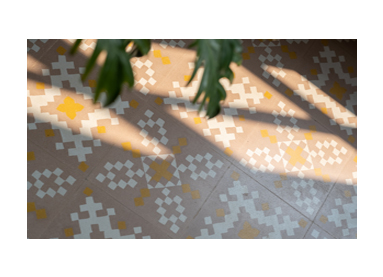 51Make it your OwnPrepare to be floored! Bharat's custom tiles are your canvas for crafting floors that flaunt your individuality with flairRead More
51Make it your OwnPrepare to be floored! Bharat's custom tiles are your canvas for crafting floors that flaunt your individuality with flairRead More -
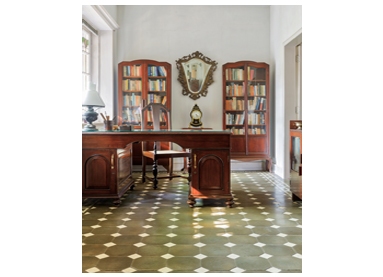 52Witness to Eminence: Darbhanga House, Mumbai My Home SeriesOnce home to the father of the Aarey Dairy farm, this lavish apartment has seen many an eminent personality grace its floors.Read More
52Witness to Eminence: Darbhanga House, Mumbai My Home SeriesOnce home to the father of the Aarey Dairy farm, this lavish apartment has seen many an eminent personality grace its floors.Read More -
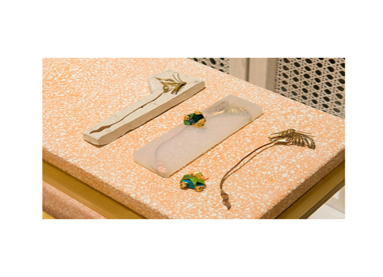 53The Terrazzo RenaissanceHistory repeats itself as terrazzo makes a triumphant comeback in the world of interior decor, adding a burst of timeless elegance to modern spaces!Read More
53The Terrazzo RenaissanceHistory repeats itself as terrazzo makes a triumphant comeback in the world of interior decor, adding a burst of timeless elegance to modern spaces!Read More

